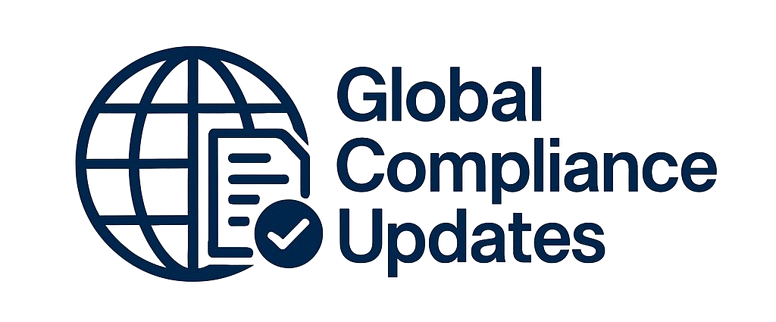This webinar is about scheduling and how to structure a project schedule that works and ensures the accomplishment of the project’s objectives.
Participants will be walked through the scheduling process from start to finish in language that will clearly describe those scheduling tasks that must be accomplished to build a solid project schedule from the point of creating the WBS to the actual execution of the project and monitoring and controlling project performance.
Scheduling compression and optimization techniques will be discussed and applied to the examples used to explain the scheduling process.
This webinar is one in a series of webinars that detail all of the critical aspects of project management. This webinar will discuss project scheduling, why it is so important to project success, and how that scheduling process is executed.
The role of project management unfortunately lands in the laps of those least prepared to take on the task. These people work hard, are well-meaning, and most importantly smart. But nothing is worse than being handed the management of a project without the skills to execute it successfully. Most accidental project managers open an Excel spreadsheet and that serves as the project schedule. Bad move!
WHY SHOULD YOU ATTEND?
Projects are one-time but very complex undertakings. Building a detailed and well-crafted schedule is crucial to completing projects on time and on budget. Scheduling allows management to identify, optimize, and effectively apply the tradeoffs between the elements of the triple constraint – time, cost, and quality/scope.
Project performance is reported against those elements or baselines iteratively across the life of the project allowing the project manager to exercise effective project control. Without a good schedule, that iterative process is ineffective potentially affecting project performance. You have to plan and you have to schedule if you want to avoid those awkward embarrassing discussions with stakeholders and senior management as to why the project is not tracking to plan or worse yet, is failing miserably.
This webinar is the first step in getting there.
AREA COVERED
- Creating the schedule plan for the project.
- Defining who has authority over the schedule.
- Identifying start and end dates for project activities and tasks.
- Determining task dependencies.
- Sequencing activities and tasks chronologically to create a project calendar.
- Estimating needed resources and resource availability.
- Determining the duration of activities and tasks.
- Building project schedule.
- Monitoring and control throughout the project life cycle.
WHO WILL BENEFIT?
Any member of a cross-functional project team that has the potential opportunity to lead that project.
- Engineers
- Marketing Associates
- Product Managers
- Program Managers
- Contract Managers
- Project Managers
- Research & Development Associates, Managers, and Directors
- Design Engineers
- Manufacturing Managers
Projects are one-time but very complex undertakings. Building a detailed and well-crafted schedule is crucial to completing projects on time and on budget. Scheduling allows management to identify, optimize, and effectively apply the tradeoffs between the elements of the triple constraint – time, cost, and quality/scope.
Project performance is reported against those elements or baselines iteratively across the life of the project allowing the project manager to exercise effective project control. Without a good schedule, that iterative process is ineffective potentially affecting project performance. You have to plan and you have to schedule if you want to avoid those awkward embarrassing discussions with stakeholders and senior management as to why the project is not tracking to plan or worse yet, is failing miserably.
This webinar is the first step in getting there.
- Creating the schedule plan for the project.
- Defining who has authority over the schedule.
- Identifying start and end dates for project activities and tasks.
- Determining task dependencies.
- Sequencing activities and tasks chronologically to create a project calendar.
- Estimating needed resources and resource availability.
- Determining the duration of activities and tasks.
- Building project schedule.
- Monitoring and control throughout the project life cycle.
Any member of a cross-functional project team that has the potential opportunity to lead that project.
- Engineers
- Marketing Associates
- Product Managers
- Program Managers
- Contract Managers
- Project Managers
- Research & Development Associates, Managers, and Directors
- Design Engineers
- Manufacturing Managers
Speaker Profile
 Charles H. Paul
Charles H. Paul
Charles H. Paul is the President of C. H. Paul Consulting, Inc. – a regulatory, training, and technical documentation consulting firm. Charles is a management consultant, instructional designer, and regulatory consultant and has led C. H. Paul Consulting, Inc. since its inception over 25 years ago. He regularly consults with Fortune 500 pharmaceutical, medical device, and biotechnology firms assisting them in achieving human resource, regulatory, and operational excellence. He is a regular presenter of webinars and on-site seminars on a variety of related subjects from documentation development to establishing compliant preventive maintenance systems.
Upcoming Webinars

ChatGPT and Project Management: Leveraging AI for Project M…

Workplace Investigations 101: How to Conduct your Investiga…

Project Management for administrative professionals

The Monte Carlo Simulations in Excel for Risky Investments

Onboarding is NOT Orientation - How to Improve the New Empl…

Dealing With Difficult People: At Work & In Life

Transform Data into Insights: A Beginners Guide to Excel Pi…

Construction Lending And Real Credit Administration: Evalua…

Understanding Accounting for non - Accounting professionals

Harassment, Bullying, Gossip, Confrontational and Disruptiv…

New Form 1099 Reporting Requirements: 2025 Compliance Update

Human Error Reduction Techniques for Floor Supervisors

HR Metrics and Analytics 2025 - Update on Strategic Plannin…

Treating Employees Like Adults: Discipline versus Empowerme…

7 Ways To Beat Burnout: Without Quitting Your Job


How to Write Procedures to Avoid Human Errors

Handbook Overhaul 2026: Compliance, OBBB Act & Beyond

FDA Proposes Framework to Advance Credibility of AI Models

Ethical Terminations: Navigating Employee Exits with Legal …

Understanding EBITDA – Definition, Formula & Calculation

Project Management for Non-Project Managers - Scheduling yo…

4-Hour Virtual Seminar on Hidden Secrets of Selling & Marke…

Validation Statistics for Non-Statisticians

Data Integrity and Privacy: Compliance with 21 CFR Part 11,…


The Alphabet Soup: When the FMLA, ADA, COBRA, and Workers' …

Talent Management: How to Leverage AI and ChatGPT Tools for…


Offboarding with Care: Conducting Legal & Ethical Employee …

2-Hour Virtual Seminar on How to Conduct an Internal Harass…

Payments Fraud Detect & Prevent Check, ACH and P-Card Schem…

Managing Toxic & Other Employees Who have Attitude Issues



Reduce Stress in the Workplace: Effective Ways to Handle Co…





Excel - Pivot Tables - The Key To Modern Data Analysis and …
